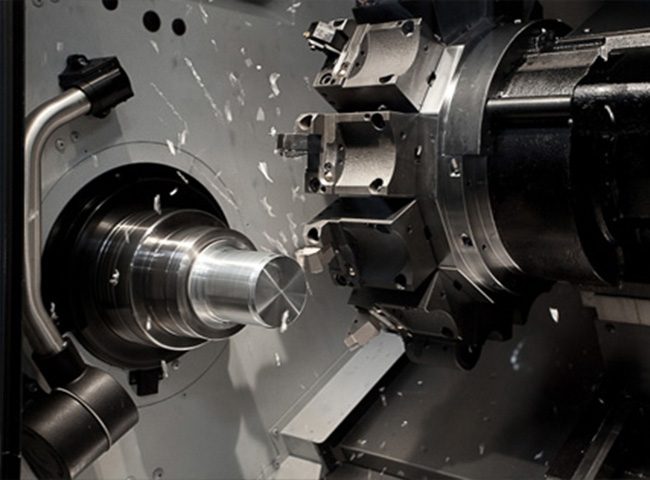Menu
Is your company in the market for a turning center? Technology has come a long way over the last few decades. Turning centers were once manual tools but are now computerized and programmable providing more efficiency and productivity than before. The same machine can perform multiple functions helping you to work faster and increase production.

Types of Turning Centers
Turning centers (or CNC lathes) have 2 categories - Horizontal and Vertical.
Horizontal machines are the most common and designed as your typical bench or engine lathe with a rotating spindle at one end fixed to a chuck, collet or other work-holding device and a tailstock at the other end to support longer workpieces.
Vertical machines are often called Vertical Turret Lathes or VTL’s or Vertical Boring Mills (VBM’s. Vertical machines have a much larger turning capacity but only allow for shorter parts. There are also inverted vertical turning centers, which reverse the position of the spindle and the turret placing the part on a moving and rotating spindle while the tools are mounted to a fixed bed or toolholder below. These type lathes are best for small part production as automation is easily adapted. All three machine types generally consist of the same basic parts, but their orientation is different.
Horizontal Turning Centers
Horizontal turning centers tend to be more flexible. They usually have a longer bed in relation to spindle size. They can also use bar feeders and commonly have tailstocks, which is not the case on verticals.
Horizontal turning centers are usually easier to computerize because the spindles and tailstock are at opposite ends of the machine. This allows the turret to be positioned to minimize clearance issues. They are flexible in process and easily accessible for operators. Approximately 70-80% of turning applications are handled by these type turning centers.
Vertical Turning Centers
Vertical turning centers (VTL’s or VBM’s) place the spindle and chuck in a fixed position in the vertical plane. The workpiece is clamped on the chuck through jaws or a special fixture. The part is rotated at a determined speed and the tooling moves up or down and left-right across the workpieces to cut and carve the desired shapes. This design of turning machine is well suited for larger parts. The vertical lathe is also not as complicated as the horizontal machines. They are the smart choice for projects that work on a single side.
While both of these machines may seem similar because both are machining centers, vertical and horizontal machining centers are used for different purposes. The type of turning center you get will largely depend on what you need the machine to do. The Horizontal turning center is often the more popular choice. They are usually less expensive, easier to set up and easier to operate.
Vertical turning centers are more expensive, but they can perform more complex tasks with larger workpieces. They are more versatile also because they can work on more sides than the vertical ones often having a fully articulating and rotating tool set in the vertical and optionally radial positions.
Give Manufacturing Solutions a call and let us help you find the right turning center for your company’s applications. We are here to help!
